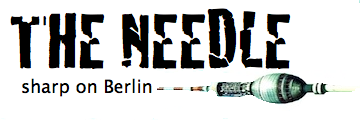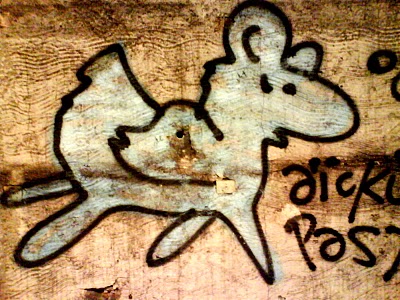A Sigh of Relief on the Death Strip

I walk through the former death strip of the Berlin Wall and relief floods through me.
I don’t miss the Wall, this nasty damn wall, but I can’t help but think we are all very lucky that it went up.
But think of the nearly three hundred lives lost trying to escape!
Now, do you hate me?

We are at Bernauer Straße, where, strangely, the line between East and West ran not through the middle of the street, but along the façades of the houses. On 13 August 1961, a Sunday, while people slept, the buildings’ exits were locked and the inhabitants trapped. In the morning, and the days that followed, many broke through, jumping from the third floor windows to get to the West. An old woman, after seeing her grandchildren to safety, died from her injuries. Then the window cavities were filled with mortar and brick.
A church was stranded in no man’s land, worshippers passed along the barbed wire, the guns trained over them to prevent escape. They must have contemplated the name, the Church of the Reconciliation, when it was detonated in the eighties to make room for the death strip.
You know the other stories: of swimmers, an escape through a canal, dodging barbed wire and the projectile of underwater bullets. A lost little boy convinces a border guard to let him across, to his parents, until a superior intervenes. There are pictures of relatives shouting, using signs to communicate across the barbed wire, because the telephone wires have been cut. A family, turned back, stands bewildered before Friedrichstraße station, wishing they’d moved a day earlier. A young man, shot, still just inside East Germany so the Wessies can’t help him, bleeds to death at the Wall’s base.
No wonder Berliners hate this wall and wanted all traces of it eradicated to ‘heal’ the city. Others wondered whether this was a dangerous act of forgetting. No man’s land was the site of the frantic building boom of the nineties, a manic desire to knit the city back together. In most places, the Wall is remembered only by an inconspicuous stone line in the pavement. Many of the most visible memorials are in fact reconstructions from the turn of this century. The Deutsches Historisches Museum rescued panels, wiring, even a whole watchtower in 1990. They were later displayed, after a long fight with a wall-weary lobby, at a memorial site where the wall had previously been taken down. Most of the remaining wall was at first sold at auctions and department stores to pay off East German debts, then ground down, at a facility near Pankow, into fine sand. Now that the Wall’s been eliminated most everywhere, and more than twenty years have passed, it’s easy to mistake an empty lot as no-man’s land or a graffitied wall as remains. When I first moved here, I saw the Wall everywhere it wasn’t.
Many Germans will tell you the Wall is still there: they walk down a street, turn, and expect to see it. It’s in the corner of the eye, and then it vanishes. Or else it appears as the Wall inside, the classification impulse to judge, on a person’s business manner or haircut, whether he is an Ossie or Wessie. Some people call the Wall the ‘zipper’: the thing that both divided and united Germans. Nothing like a wall separating two peoples to convince them they should actually be together. But of course, once the wall fell, many Ossies felt like they had been colonised by the capitalist state and lost their solidarity, and many Wessies felt like the whole ordeal of reunification cost too much money. The Wall lives on in disillusionment, resentment and relief.
Yes, relief.
One cannot miss this wall, it was too brutal, it claimed and ruined too many lives. But I think of the many more who were probably saved by its construction.
I remember the flood, don’t you? The waters rising all around us suddenly. Aren’t you haunted by the spectre of 1958, when a crisis in Berlin could easily have led to nuclear war in Europe?
The Soviets feared that the Americans were arming the West Germans with nuclear weapons. Khrushchev, in response, edged the world towards crisis in Berlin by demanding American withdrawal. He demanded Berlin become a ‘Free City’, one easily absorbed by the Soviets. After Laos, and the Bay of Pigs, Kennedy could hardly back down. And so when the East Germans built their wall instead, deepening détente, halting the tide of Germans fleeing West, the Western powers greeted the Wall with relief.
Better a wall than nuclear war.
Kennedy went sailing.



